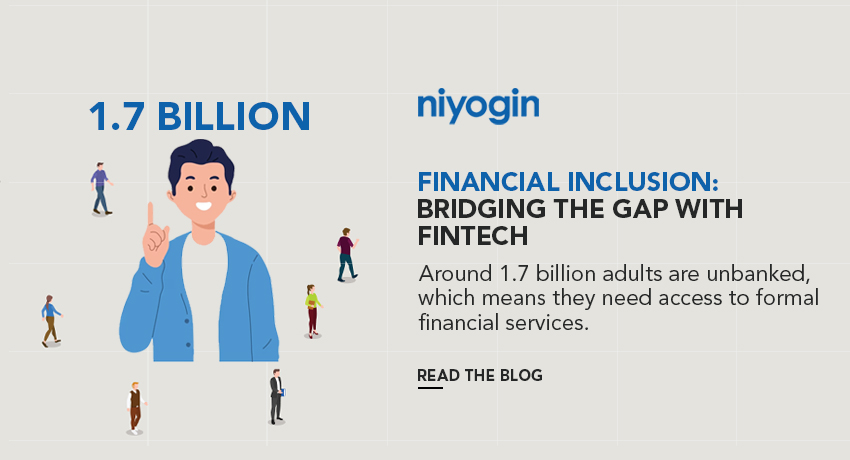Financial inclusion remains a global challenge, with a considerable section of the world’s population needing access to basic financial services. According to the World Bank, around 1.7 billion adults are unbanked, which means they need access to formal financial services. While there has been improvement in recent years, a significant gap still needs to be closed. Fintech, or financial technology, has emerged as a significant instrument for tackling this issue by offering innovative and accessible financial services.
- The Financial Inclusion Situation
Due to limitations such as physical infrastructure, cost, and legal limits, traditional financial institutions have failed to reach disadvantaged populations, particularly in developing nations. As a result, millions remain uninsured and must be enrolled in the formal financial system.
- Global Advancement
According to the World Bank’s Global Findex Database 2017, 69% of individuals globally have a financial institution or mobile money provider account, up from 51% in 2011. This is an encouraging development, but more work is needed to get the other 1.7 billion individuals into the fold.
- Regional disparities
Financial inclusion is not uniform across areas. Sub-Saharan Africa, for example, had only 43% of persons having a bank or mobile money account in 2017. In high-income OECD countries, this figure topped 90%. These differences emphasize the need for global initiatives to increase financial inclusion.
- Gender Gap
Another big issue is the gender gap in financial inclusion. According to the World Bank, women are less likely than males to access formal financial services in many developing nations, with a gender disparity of up to 9 percentage points in some regions.
Fintech’s Role in Bridging the Gap
Fintech firms are reshaping the financial landscape by harnessing technology to provide creative solutions that overcome the limits of traditional banking institutions. Here are some significant data and insights into how fintech is helping to close the financial inclusion gap:
- Mobile Money Services: Mobile money is a valuable tool for boosting financial inclusion, particularly in areas with limited banking infrastructure. As of 2021, the GSMA claimed 372 active mobile money services in 95 countries, with over 300 million registered accounts. These services enable users to keep, transmit, and receive money using mobile phones, making financial services more accessible.
- Digital Payments: Digital payment alternatives, such as digital wallets and peer-to-peer (P2P) payment networks, have acquired substantial acceptance. According to Statista, the global transaction value in the digital payments market is expected to exceed US$8 trillion in 2023, with a CAGR of 17.6% from 2021 to 2025. These platforms facilitate transactions and increase access to financial services for people who do not have bank accounts.
- Microfinance and lending: Fintech platforms make it easier for small enterprises and individuals to obtain microloans. M-Pesa, a mobile money network in Kenya, for example, provides its users with tiny, short-term loans. Ant Financial’s Alipay has provided small loans to millions of consumers and enterprises in China. These inventions enable marginalized groups to establish or expand their enterprises.
- Insurtech: Insurance is a critical component of financial inclusion because it provides a safety net against unforeseen financial shocks. Insurtech startups use technology to produce low-cost insurance products. Microinsurance products, for example, are becoming increasingly popular in Africa and Asia.
- Blockchain and cryptocurrency: Blockchain technologies and cryptocurrencies are also being investigated as tools for financial inclusion. These technologies provide secure and low-cost methods of moving and storing value, possibly reaching unbanked people.
To sum up, the objective of reaching unbanked and underprivileged communities becomes increasingly realistic as technology advances and fintech businesses emerge. However, it is critical to guarantee that the growth of fintech services is carried out responsibly, with an emphasis on consumer protection and regulatory collaboration. Finally, collaboration among fintech entrepreneurs, governments, and financial institutions is critical to attaining real financial inclusion and reducing gaps in access to financial services globally.
